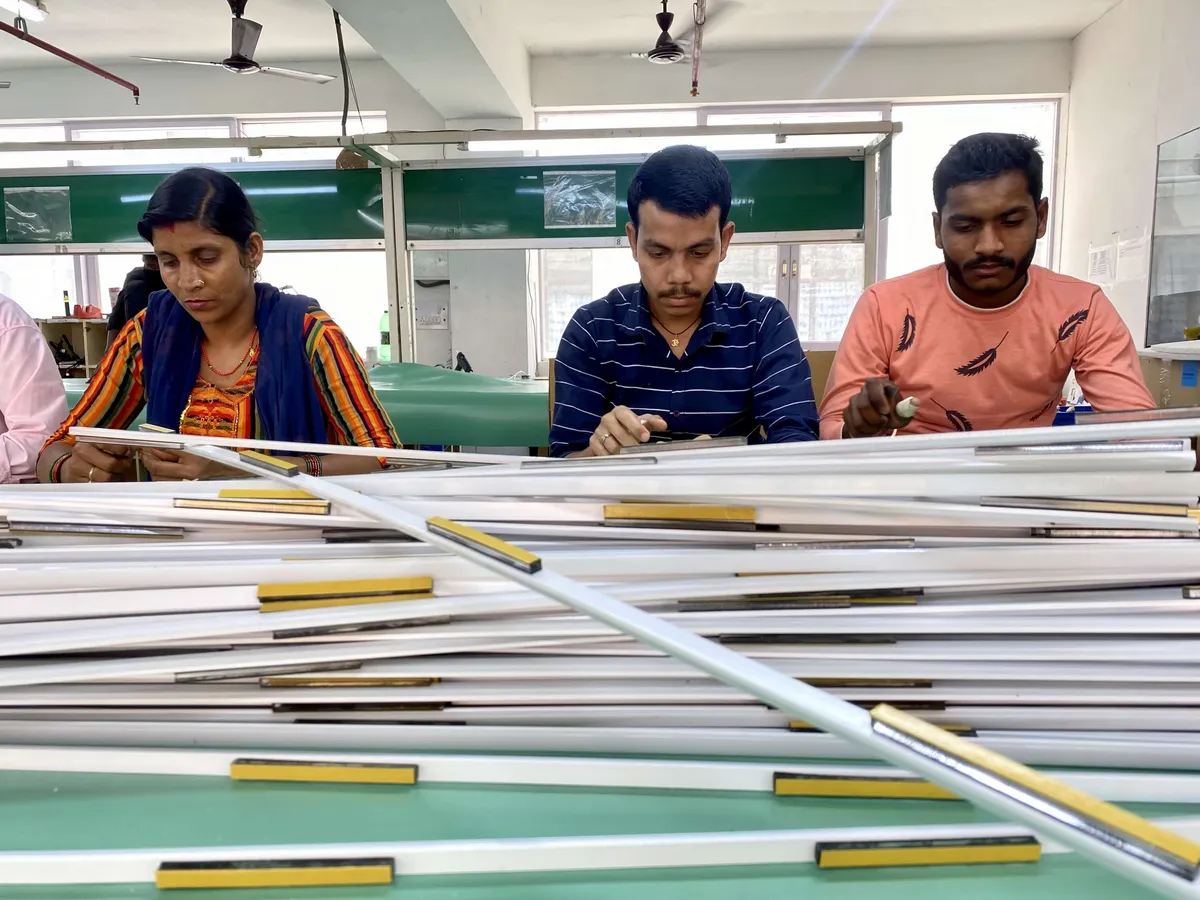Ten years ago, Noida, located on the side of Delhi, was mostly fields, cows and small villages.
Now it is a promising industrial and residential area, where offices, factories and clusters of high-rise buildings stand out in the darkest of clouds.
The area also has a new airport, one of the largest shopping centers in the country, and plenty of manufacturing industry. For example, Korean Samsung has built a significant production plant in Noida.
A Finn has also started to absorb the witch Greenlux, which manufactures led lights for industry. It is currently building a new manufacturing unit near its existing factory. The investment is approximately three million.
“Demand has grown wildly, and we wanted to respond to it. In addition, we focus on the development of new technologies”, says Dhruv Mahajandirector and partner of Greenlux’s Indian company.
The company firmly believes in both the Indian domestic market and the growth of the export market and now wants to invest in India instead of China.
“China built good manufacturing networks, but now it’s India’s time. We can already compete with China quite well,” he says.
Western.
According to Greenlux’s Dhruv Mahajan, India is more Western than China.
PHOTO: Pia Heikkilä
More Western than China
There is a buzz inside the factory. There, the functionality of the LED lights is tested by hand. The company has more than a hundred employees in the unit and more are being sought.
India has many advantages compared to China, Mahajan reminds. One of them is cheaper labor.
“Legislation, the English language and Western-style business culture are other advantages of India,” he says.
“There have been problems with copying in China, while India has strict IP (intellectual property) laws and regulations that support business operations. The government has made foreign investments even safer,” he praises.
According to forecasts, India will become the world’s third largest economy by 2027, surpassed only by the United States and China.
In recent years, significant reforms have been carried out in India, which have opened up the operations of foreign companies in the country. A lot of infrastructure is being built around the country.
Noida is a good example of India’s ability to adapt quickly. The area is now being developed especially by Koreans and Japanese, who are planning industrial concentrations and infrastructure projects there.
Testing.
Nanhi Kumari tests LED lights at the Greenlux factory in Noida.
PHOTO: Pia Heikkilä
Export from India to the world
Also a manufacturer of ventilation equipment Halton is currently considering expanding its operations in India.
“Market growth is now promising. The government’s Make in India program supports increasing our presence, and while our customer’s demand grows in the country, so do our operations,” says the company’s CEO. Kai Konola.
The company currently manufactures its equipment in Malaysia and China. India may be next on the list.
“Now it seems that in the next three years we have to decide whether we will start manufacturing operations in India,” says Konola.
Going to India would not be out of China, he continues. “The Indian operation is able to support operations in the Middle East, and through India we can create a path to these other countries.”
A tunnel technology company from Iisalme The norm has trimmed its Indian operations to peak condition. The company recently invested in increasing equipment production in Jaipur.
“Business has grown faster than average. Underground mining of metals such as zinc, copper and chromite has increased production while demand has increased in the country. We see potential in it, because increasing production safely and consistently takes place through mechanization in these mines,” says Normet’s India manager Subhasis Mohanty.
Every year, the country’s government has announced new infrastructure projects, which in turn further boosts Normet’s operations.
“Although a lot has been accomplished and a lot is underway, there is still a lot to be done in the future, which makes the Indian market promising,” says Mohanty.
India is a cold-blooded negotiator who does not give in on trade agreements because it wants to promote its own, perceived important sectors and domestic manufacturing.
The EU Commission has announced its goal to complete trade agreement negotiations with India by the end of this year.
The thorn in the flesh is India’s protectionist policy, which it pursues especially in the form of customs duties. Climate change goals and goals related to sustainable development are also rubbing off on the parties.
THE FACTS
Trade agreements are now moving forward
The EU is trying to complete trade agreement negotiations with India by the end of the year.
In addition to digitization, important areas for Finland in the agreement are education and sustainable development projects.
Earlier in the spring, India concluded an agreement with the non-EU countries Norway, Switzerland, Iceland and Liechtenstein, which will remove customs fees if companies from these countries commit to investing in India.
The agreement is estimated to bring investments of over one hundred billion euros to India.
In addition, India recently signed agreements with Australia and the United Arab Emirates.
